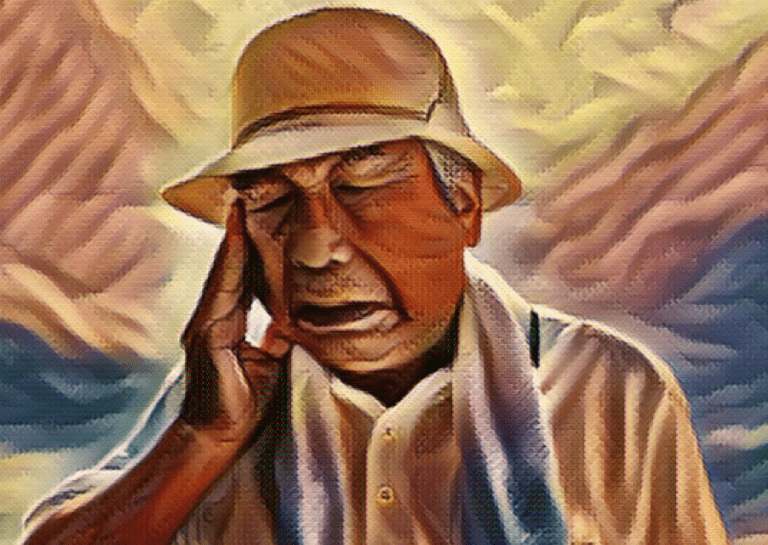Heatstroke is the body’s physiologic response to particularly high temperatures or physical overexertion. It is caused by environmental exposure to heat which raises the body’s core temperature to between 104 and 105˚F.
Heatstroke can cause Central Nervous System (CNS) dysfunction which inhibits the body’s ability to maintain thermoregulation. This can lead to anhidrosis, or a lack of sweating, which makes it harder to cool down.
This article covers everything parents and caregivers should know about the signs and symptoms of heatstroke in children, as well as information on how to prevent it.
Classification
Heatstroke can be divided into 2 types, depending on how it is caused.
Classic heatstroke
Classic heat stroke occurs most frequently in young children who become trapped in hot environments (e.g. hot cars), as well as those with underlying conditions that inhibit thermoregulation.
Exertional heat stroke
Exertional heat stroke is more common in young people engaged in intense physical activity in hot temperatures or humidity. Those at risk of exertional heat stroke are athletes, particularly football players, and military personnel.
Parents and caregivers of young children are more likely to encounter classic heatstroke, while exertional heatstroke is more likely to affect adolescents.
Causes
Heat-related death claims around 700 lives each year in the United States. Although the majority of heat-related deaths occur in older adults, young children are also at risk. There are a number of potential causes of heatstroke in children.
Children and infants left in hot vehicles are often unable to operate car locks and doors or are restrained by seatbelts. Leaving young children unattended in cars makes them particularly vulnerable to heatstroke because the temperature can increase at an unexpected and dangerous rate inside.
Among athletes in US high schools, heatstroke occurs most frequently in American football players. Heat illness is the third leading cause of death in teenage athletes, after traumatic and cardiac causes. Those who are overweight or obese are at a higher risk of heatstroke. Furthermore, there may be an increased risk for those who take prescription amphetamines or dietary supplements containing creatine.
Symptoms
Heatstroke is diagnosed based on an elevated core temperature of 104 to 105˚F accompanied by neurologic and CNS symptoms. Due to temperature variability between people with different heat tolerances (e.g. athletes vs non-athletes) and between the onset of heatstroke and time of measurement, CNS symptoms are seen as the main criteria for diagnosis.
CNS and physiologic symptoms include:
- Impaired judgment
- Inappropriate behavior
- Seizures
- Delirium/mental agitation
- Poor balance and coordination
- Speech difficulties
- Coma
- Abnormally rapid heartbeat (tachycardia)
- Abnormally rapid breathing (tachypnea)
- Excessive sweating (diaphoresis)
- Warm, flushed skin
- Vomiting
- Diarrhea
Treatment
In hospitals, heatstroke is treated through stabilization, rapid cooling, and suppression of shivering.
Stabilization
Children often need airway management to stabilize the central nervous system and to deal with symptoms such as coma and seizures. Circulatory stabilization through fluid resuscitation is often needed for victims of exertional heatstroke. Oxygenation and medication are also used to treat symptoms such as seizures and altered mental states.
Rapid cooling
An elevated core temperature poses serious health risks to children, such as organ damage and mortality. It is therefore vital to cool down the child suffering from heatstroke using warm water spray and high-flow fans. Placement of ice packs on the neck, underarms, and groin and the use of a cooling blanket are effective methods of rapid cooling for infants. The goal is to bring the core temperature down to 100.4˚F.
Suppression of shivering
It is common for cooling methods to cause shivering. Shivering suppression is an important part of treatment for heatstroke as it prevents organic heat production in the body, thus aiding recovery. This is achieved through intravenous medication.
Prevention
To prevent heatstroke, never leave infants and children unattended in cars. Even when it’s not particularly hot outside, the temperature inside the car can rise rapidly. Additionally, ensure children and adolescents are adequately hydrated before engaging in sports or physical activity.
On hot and sunny days, encourage children to stay hydrated and to use sun protection. It is recommended to avoid direct sunlight during the hottest part of the day, which is usually between 11 am and 3 pm.
References
- Epstein Y, Yanovich R. Heatstroke. N Engl J Med. 2019 Jun 20;380(25):2449-2459. doi: 10.1056/NEJMra1810762. PMID: 31216400.
- Kerr ZY, Yeargin SW, Hosokawa Y, Hirschhorn RM, Pierpoint LA, Casa DJ. The Epidemiology and Management of Exertional Heat Illnesses in High School Sports During the 2012/2013–2016/2017 Academic Years. J Sport Rehabil. 2020 Mar 1;29(3):332-338. doi: 10.1123/jsr.2018-0364. Epub 2019 Jun 6. PMID: 30747580.
- Westwood CS, Fallowfield JL, Delves SK, Nunns M, Ogden HB, Layden JD. Individual risk factors associated with exertional heat illness: A systematic review. Exp Physiol. 2021 Jan;106(1):191-199. doi: 10.1113/EP088458. Epub 2020 May 8. PMID: 32249985.
- Vaidyanathan A, Malilay J, Schramm P, Saha S. Heat-Related Deaths – United States, 2004-2018. MMWR Morb Mortal Wkly Rep. 2020 Jun 19;69(24):729-734. doi: 10.15585/mmwr.mm6924a1. PMID: 32555133; PMCID: PMC7302478.
- King K, Negus K, Vance JC. Heat stress in motor vehicles: a problem in infancy. Pediatrics. 1981 Oct;68(4):579-82. PMID: 7322691.
- Coris EE, Ramirez AM, Van Durme DJ. Heat illness in athletes: the dangerous combination of heat, humidity and exercise. Sports Med. 2004;34(1):9-16. doi: 10.2165/00007256-200434010-00002. PMID: 14715036.
- Bailes JE, Cantu RC, Day AL. The neurosurgeon in sport: awareness of the risks of heatstroke and dietary supplements. Neurosurgery. 2002 Aug;51(2):283-6; discussion 286-8. PMID: 12182766.
- Glazer JL. Management of heatstroke and heat exhaustion. Am Fam Physician. 2005 Jun 1;71(11):2133-40. PMID: 15952443.
